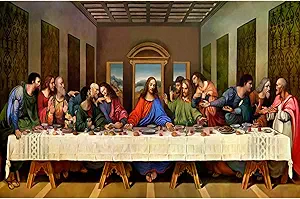The Liturgy of the Eucharist actually begins when we sit down and put money in the collection basket. This is our tangible gift offering. Remember in the Bible, people were always giving doves, sheep, and lambs for gift offerings. This passing of the basket is the way we do it.
While we are passing the basket, some of the people bring up "gifts" of water, wine, and bread (communion hosts), to the priest. A hymn will be sung while this is going on.
These gifts of water, wine, and hosts will become the Body and Blood of Christ. The priest will take these "gifts" and say prayers and blessings and place them on the altar, where the "consecration" will occur.
The priest will symbolically wash his hands. This symbolizes that we must be free from sin to receive Communion.
Everyone will kneel now because the most sacred part of the Mass is happening. Kneeling acknowledges the presence of God. Beginning here, the priest celebrating the Mass is acting in personna Christi. He will say the exact same words Jesus did, at His Last Supper. The Catechism of the Catholic Church 1353 states that the Holy Spirit comes to consecrate the "gifts." These words are "This is my body" in offering the bread and "This is my blood or the chalice of my blood" in offering the wine. If the priest doesn't say these exact words of Jesus, the consecration is not valid. And you should notice that the priest is talking to God the Father, not Jesus, His Son. It is Jesus' sacrifice offered to the Father that the priest is re-presenting. And it is offered for all the baptized people present. Notice the priest using "we," not "I" in the Eucharistic prayers. "Therefore O Lord, we humbly implore You." "Accept, O Lord, the offerings we have brought to honor ..." "...we might come to believe in your Word..." "We proclaim Your Death..."
The priest has over ten different texts to choose from when praying the Eucharistic prayer but he must use Jesus' exact words. During the rest of the Eucharistic Prayer, we pray for the whole Church and our beloved dead.
Finally, we hear the priest ask us to stand and say, "we dare to say." Everyone will pray the Lord's Prayer and give each other the "Kiss of Peace." This "Kiss" is just an acknowledgment of goodwill.
The priest then takes the consecrated host and breaks it. He places a small piece in the chalice. This is to show the unity of the Body and Blood of the Lord with the people and the Church. He then says a prayer known as the Lamb of God or Agnus Dei.
Then holding up the consecrated host, the consecrated host, the priest says, "Behold the Lamb of God..." We the people answer "Lord, I am not worthy that you should enter under my roof, but only say the word and my soul shall be healed." We then get up and go to the altar to receive Communion (the consecrated Body and Blood of Jesus).
After receiving Communion we go back to the pew to pray our own thoughts--thanksgiving and praise. When everyone is finished. The priest goes to the altar and picks up and puts away the receptacles he used for the ceremony (He does the dishes, so to speak.) When the remaining consecrated hosts are placed in the Tabernacle and its doors closed, everyone sits. In my parish, it's a loud clang!
The priest sits too for a brief moment to pray his thanksgiving. There are songs sung during Communion but this varies with the number of people who receive. Some people leave at this point, figuring that the important part is over, but they shouldn't. They should wait for the priest's blessing and maybe there are some announcements. There's a closing hymn, too. It is very rude to leave this early.




No comments:
Post a Comment